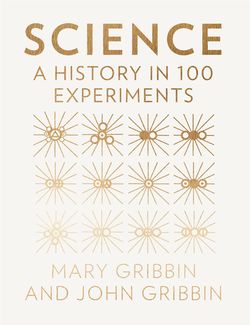Читать книгу Science: A History in 100 Experiments - John Gribbin - Страница 17
Оглавление| No. 12 | THE SPEED OF LIGHT IS FINITE |
Newton’s remark about experiments ‘and Observations’ is important. Sometimes Nature does the ‘experiment’ for us, and the role of the scientist is ‘only’ to observe what is going on and work out why it has happened. But it often takes a very clever person to work this out. Ole Rømer’s discovery of the finite speed of light is a case in point.
In the seventeenth century, there was a great deal of interest in using studies of the eclipses of the moons of Jupiter (discovered by Galileo) as ‘clocks’ to determine longitude. These eclipses occur at regular intervals, as the moons orbit Jupiter in the same way that the Earth orbits the Sun. The moment when a particular moon disappeared behind Jupiter could be observed from different places on Earth, and the time at which it occurred could be compared with the local time measured from noon. This told the observers how far east or west they were from some chosen reference point. This technique was pioneered by the Italian Giovanni Cassini, who moved to the Paris Observatory in 1671. He sent the Frenchman Jean Picard to Denmark to use observations of Jupiter’s moons to establish the exact longitude of Tycho Brahe’s old observatory, so that Tycho’s records could be tied in to observations from Paris. Picard was helped by a young assistant, the Dane, Ole Rømer, who then went to Paris to work with Cassini (he was also for a time the tutor of the French Crown Prince, the Dauphin).
Over the next few years, Rømer continued to monitor the eclipses of Jupiter’s moons, and noticed that these did not always occur exactly when they were expected. He made a particular study of the moon Io, and noticed that the time between one eclipse and the next got shorter when the Earth was moving towards its closest to Jupiter (which happens when it is on the same side of the Sun as Jupiter), and longer when it was moving further away. Cassini himself thought for a time that this might be because light travels at a finite speed. When the Earth is moving towards Jupiter, the time between successive eclipses is shorter because in the time between eclipses the Earth has moved closer to Jupiter, so light from the second eclipse does not have so far to travel and gets here quicker. Similarly, when the Earth is moving away from Jupiter, the light from the second eclipse has further to travel, because the Earth has moved on in its orbit, and takes longer to reach us.
Curiously, Cassini abandoned the idea. But Rømer took it up, and made detailed observations and calculations to develop it further. In August 1676, Cassini, then still enamoured of the idea, announced to the French Academy of Sciences that the official tables of the eclipses of Io, used in calculating longitude, would have to be revised ‘due to light taking some time to reach us from the satellite; light seems to take about ten to eleven minutes [to cross] a distance equal to the half-diameter of the terrestrial orbit.’ Cassini also predicted that the emergence of Io from eclipse on 16 November 1676 would be seen about ten minutes later than would have been calculated by the previous method. In fact, the emergence that occurred on 9 November was observed and matched the new calculations, prompting Rømer to make a more detailed presentation to the Academy.
© New York Public Library/Science Photo Library
Danish astronomer Ole Rømer (1644–1710) with the tools of his trade.
Unfortunately, most of Rømer’s papers were lost in a fire in 1728, and the only account we have of that presentation is a rather garbled news story, which was translated into English and published in 1677 in the Philosophical Transactions of the Royal Society. But a later document survived and spells out his calculation and the dramatic result that he announced. With the best estimate available to him for the size of the Earth’s orbit, Rømer calculated that the speed of light must be (in modern units) 225,000 kilometres per second. If we make the same calculation, using Rømer’s observations, and plug in the modern value for the diameter of the Earth’s orbit, we get a speed of 298,000 kilometres per second. This is remarkably close to the best modern measurement of the speed of light: 299,792 kilometres per second.
Although not everyone was convinced at the time, the discovery made Rømer’s reputation. He visited England, where he was warmly received and discussed his observations and their implications with such people as Isaac Newton, Edmond Halley and the Astronomer Royal John Flamsteed. They were convinced. In his book, Opticks, Newton mentioned that light takes ‘seven or eight minutes’ to travel from the Sun to Earth. Rømer returned to Denmark in 1681 to become Astronomer Royal and Director of the Royal Observatory in Copenhagen, the spiritual heir to Tycho.
